Radom 2023-09-06
Radom Main Railway Station.
Geographic coordinates: 51.391N 21.155E. Elevation 166 m above sea level.
Radom Główny is a railway station located in Radom. The station was opened on January 25, 1885, when Poland was under partition. Radom was then in the Kingdom of Poland, which was completely dependent on the Muscovite state. Currently, Radom is located in the free Republic of Poland in the Mazowieckie Voivodeship. The station is on the list of monuments; Registration No. 376/A/88 of April 4, 1988.
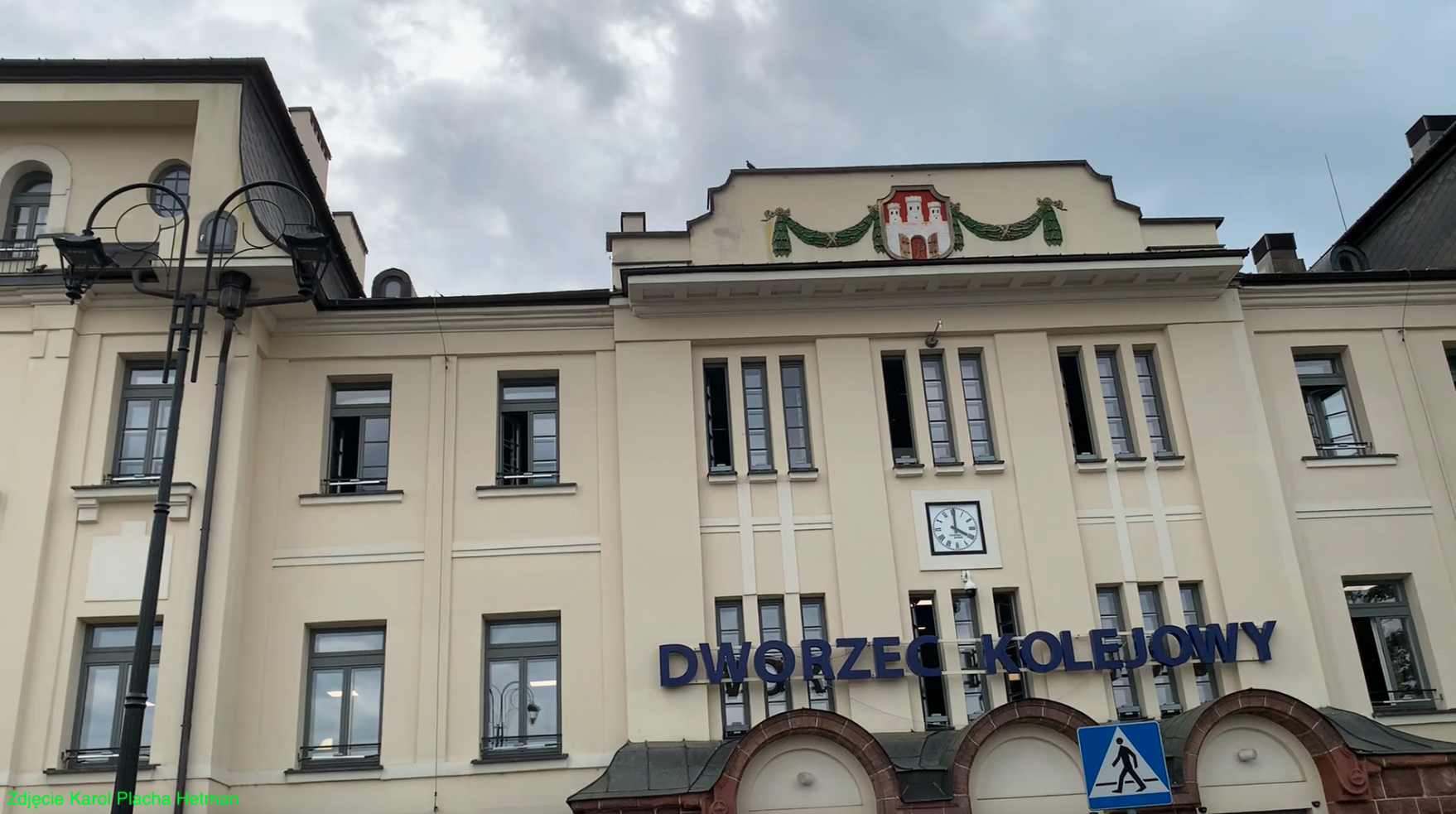
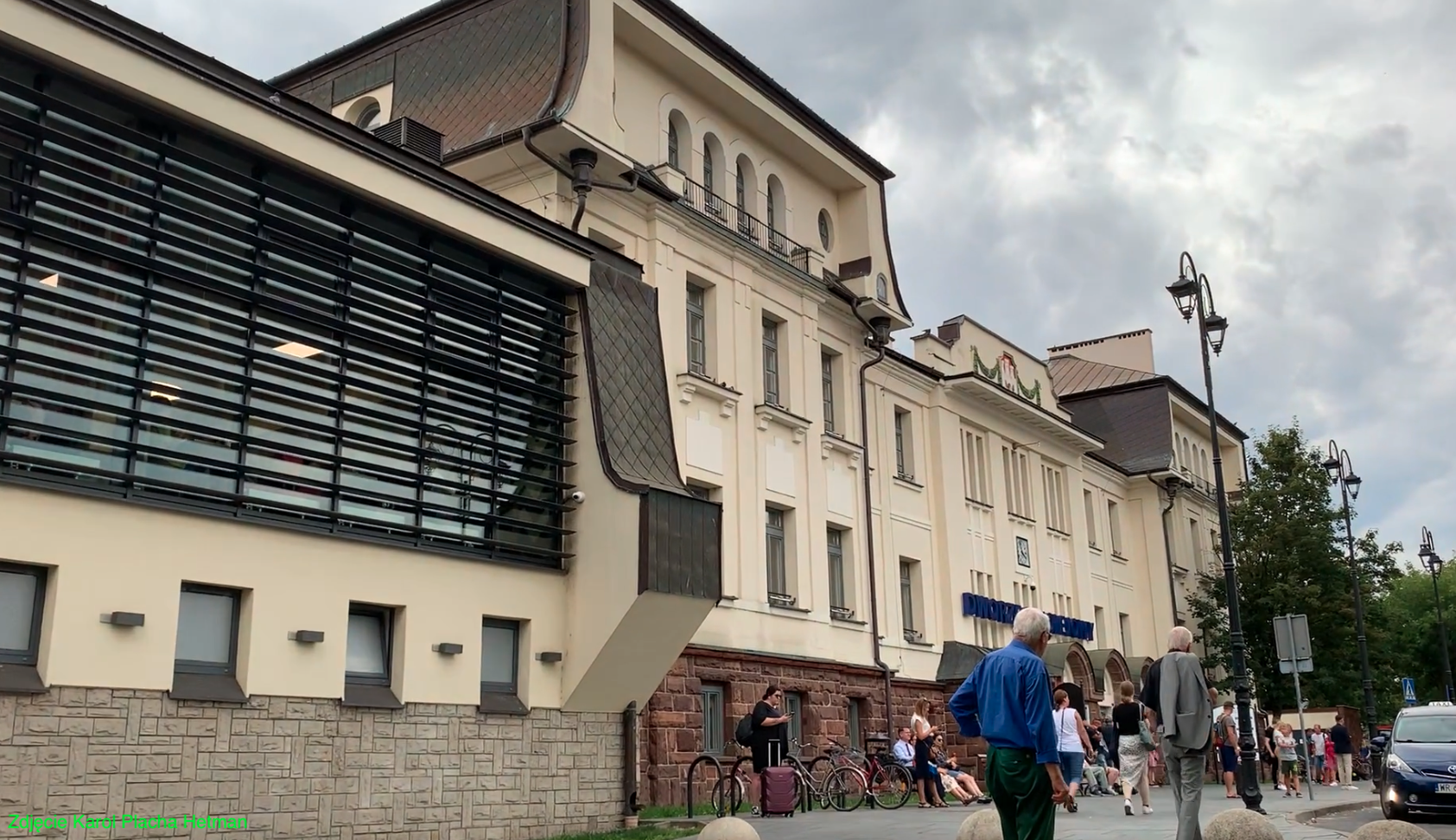
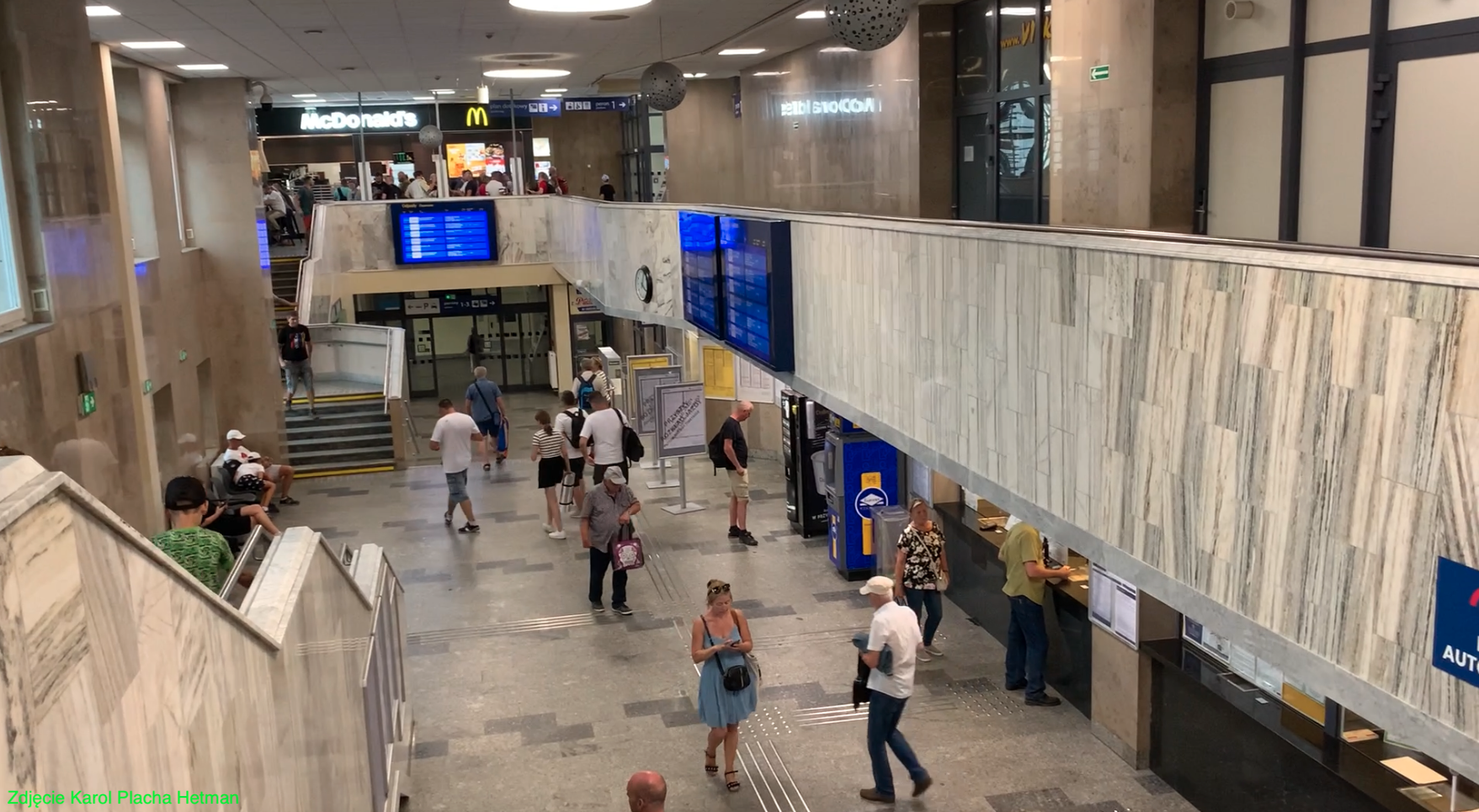
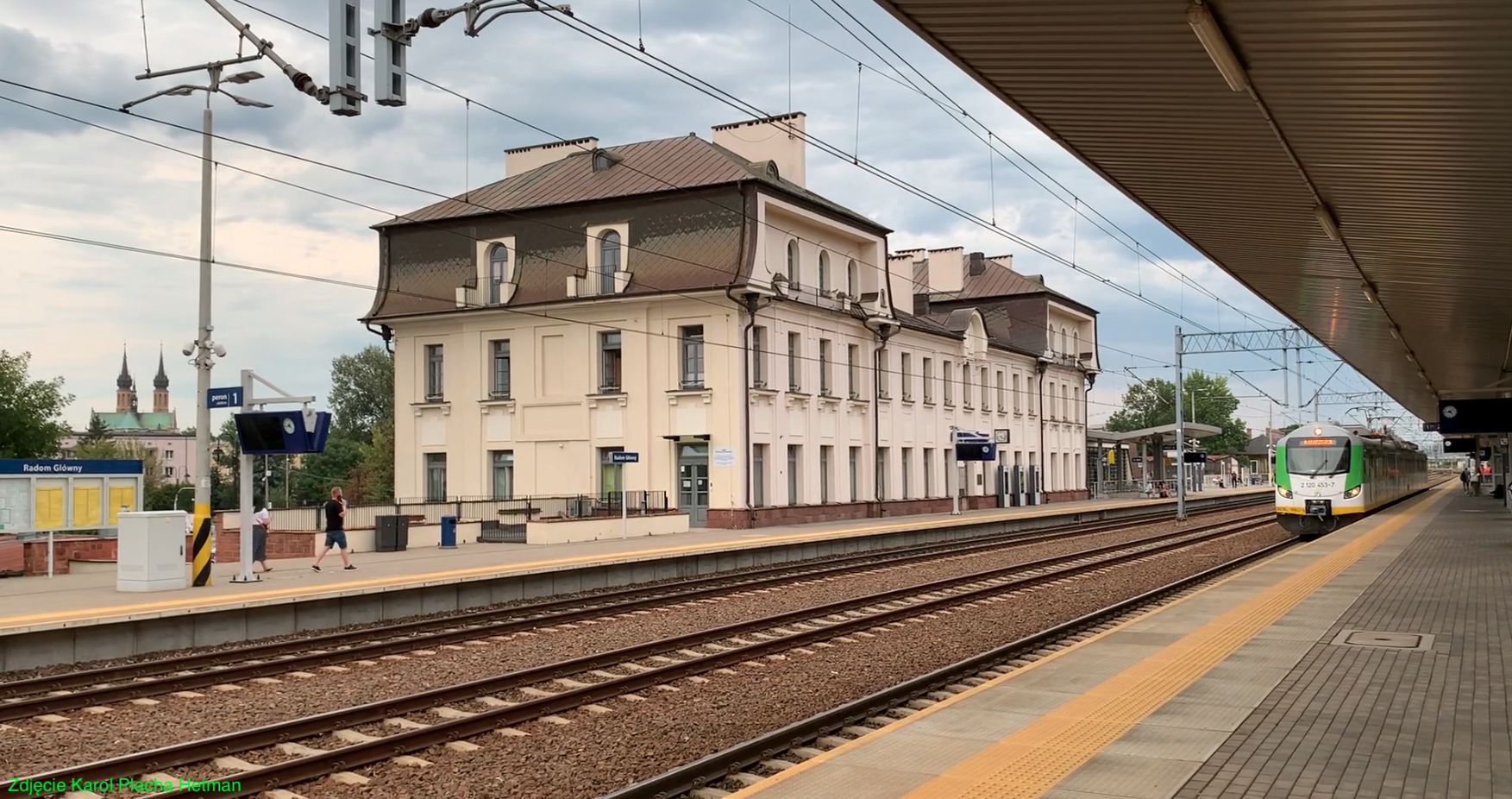
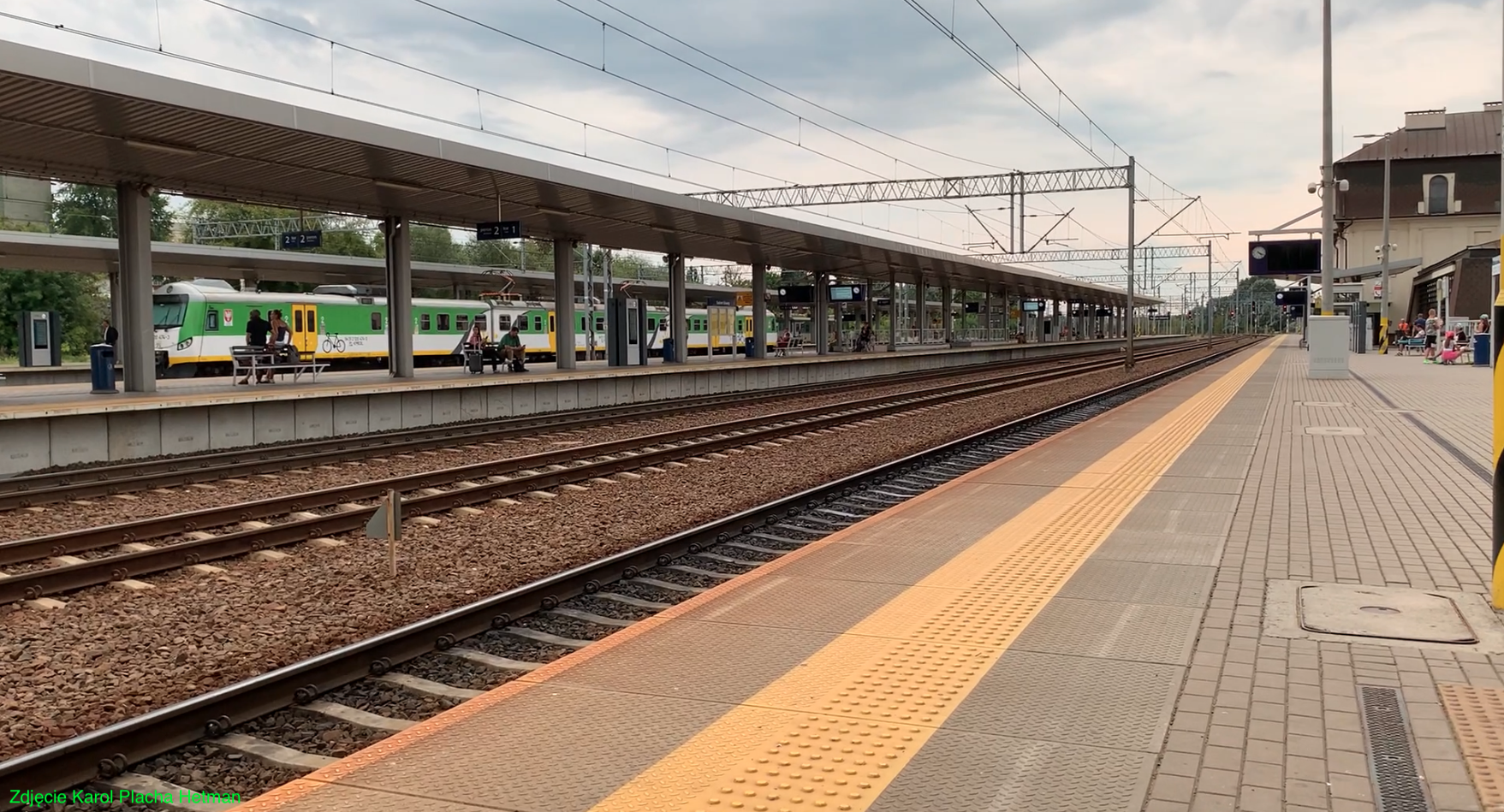
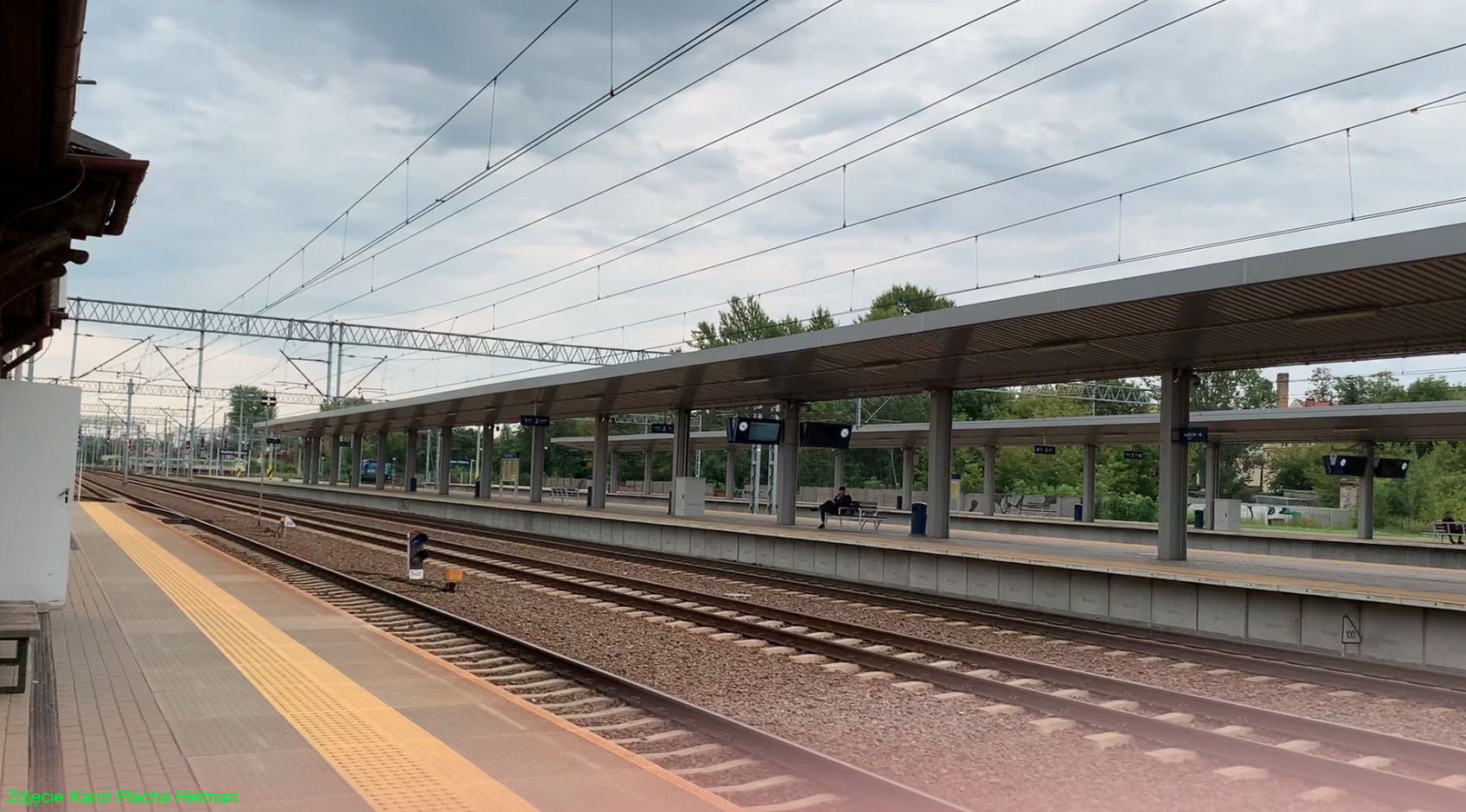
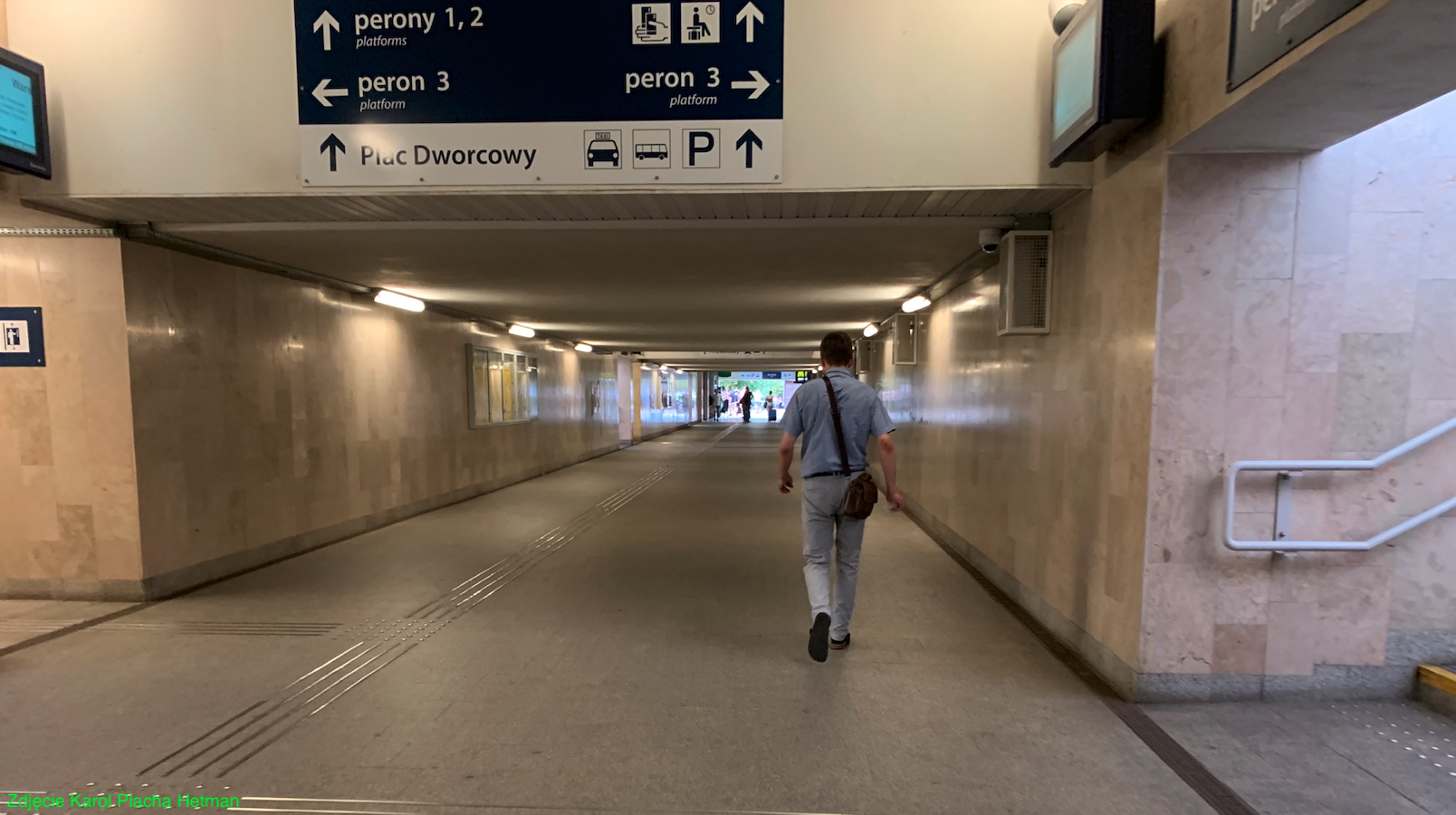
In 2017, the station served 3,500 passengers a day, which gave the station 70th place in Poland. In 2018, the Radom Główny station served 4,400 passengers a day. Due to the Chinese virus pandemic, in 2020, the number of passengers transported decreased to 3,300 people per day. The following railway lines run through the station: No. 8 Warszawa Zachodnia - Kraków Główny. No. 22 Tomaszów Mazowiecki - Radom Główny. No. 26 Łuków - Radom Główny.
The history of the railway station in Radom.
The Muscovites allowed the construction of a railway line, which was named Droga Żelazna Iwanogrodzko-Dąbrowska. The line connected Iwangorodzko, the Polish name of Dęblin, with the town of Dąbrowa, the Polish name of Dąbrowa Górnicza. Dąbrowa Górnicza is Zagłębie Dąbrowskie, Dęblin is Zagłębie Staropolskie. The line was 461.9 km long and wide gauge; 1524mm. Construction works lasted in the period 1882-1885. Already in 1919, the Poles turned the track into a normal one. The line ran through Radom, Skarżysko-Kamienna, Kielce, Olkusz to Dąbrowa Górnicza. In addition, there were branches to Sosnowiec and the Granica station.
The Muscovites deliberately hindered the development of the Kingdom of Poland and themselves were not interested in the development of industry in the Muscovite state. They deliberately ordered the construction of a broad-gauge route so that their brothers, the Germans, could not use the track in the event of aggression. It is worth mentioning that the Warsaw - Vienna route in the Kingdom of Poland was built as a standard gauge, but after some time the Muscovites ordered it to be converted into a wide gauge. In addition, in the Moscow state, Muscovites built lines in the north-south direction to use them to transfer their own troops during the war, and not for the development of the country.
In 1880, the lack of even one railway line in the Kielce region was clearly visible. It was a brake on development. Horse-drawn carriage transport was inefficient. Numerous manufactories and factories already had steam engines that needed hard coal. And the manufactured products could be exported to the East.
Demands were also put forward by the inhabitants of Sandomierz, who wanted a convenient connection with Piotrków (now Piotrków Trybunalski). Piotrków was at that time the capital of the province. In 1862, another initiative was thwarted by the outbreak of the January Uprising. Then there was the initiative of a group of bankers to build a trail; Ostrowiec - Szydlowiec - Radom. And this initiative did not get a concession. There was also another initiative to build a trail; Piotrków - Końskie - Skarżysko - Starachowice - Ostrowiec - Opatów. Another concept was to divert the railroad to the trail; Opatów - Stopnica - Kazimierza Wielka - Dąbrowa Tarnowska - Tarnów. There was also the trail concept; Ivanogród - Kraków, with branches to Dąbrowa and Koluszki.
Unexpectedly, in April 1875, in St. Petersburg, a decision was made to build a line from Ivanogród to Dąbrowa Górnicza, and a branch line to Koluszki and Ostrowiec. The Ministry of War stipulated that the track gauge should be 1524 mm. There should be two tunnels on the route, which should be easily destroyed in case of war to block transport.
16 companies took part in the tender. As the Muscovites delayed the competition, most interested parties withdrew from the planned competition. Concessions were unsuccessfully sought by the company Droga Żelazna Warszawa-Vienna, which in 1912 was finally liquidated by the tsar's order. The company Droga Żelazna Warszawsko-Wienńska offered the construction of the route, cheaper by 1 million rubles than the competitor Bloch Towarzystwo Droga Żelazna Iwangorod-Dąbrowa.
Jan Giotlib (Gotlib) Bloch was a Polish banker born in Radom. Later he was named "King of Polish Railways".
In the end, only one company headed by a banker took part in the tender; Bloch Iwangrodzki-Dąbrowa Iron Road Society. It was a typically pro-Moscow company, with no experience in the construction and operation of railway lines. For the company, the construction of broad gauge was never in question. In May 1876, the company received its initial concession. On July 10, 1881, concessions and the course of the route were approved. The route was supposed to be 461.9 km long and was the longest in the Kingdom of Poland and in the entire Muscovite state. The route passed through the following towns: Dęblin - Radom - Bzin - Kielce - Olkusz - Sławków - Strzemieszyce - Dąbrowa. It had branches from Bzino (Skarżyska-Kamienna) through Końskie and Opoczno to Koluszki and in the opposite direction to Ostrowiec and Bodzechów, as well as from Strzemieszyce through Kazimierz to the village of Maczki.
On December 21, 1883, the first section from Dęblin (next to the Dęblin Fortress) was put into operation, through the bridge over the Vistula, and then Radom - Skarżyska Kamienna - Kielce. On January 26, 1885, the section Kielce - Dąbrowa was opened. The wide track ended at Huta Bankowa in Dąbrowa Górnicza. In the town of Granica (Maczki), a broad-gauge station was built in close proximity to the standard-gauge Granica station. The trail was officially launched in 1885. The management of the line was placed in Radom. Already in 1919, all wide tracks were reforged into standard gauge.
The consent to build the trail in Radom close to the city center was a sensation. It was about 1,000 m from the station to the city center. This allowed the city to develop by attracting investors. The south-eastern part of the city center has developed intensively. A new road system was planned and numerous plots of land were designated for industrial investments. The city attracted a new population.
In the period of 1899-1900, the line was nationalized and renamed the Vistula Government Iron Railway. In the interwar period, Radom was the seat of the Directorate of Regional State Railways, which was responsible for lines in a huge area of the then Republic of Poland; from Łuck to Zagłębie. In 1934, a new railway line Warsaw - Radom, the so-called Radom line, was put into operation. Currently, it is part of line No. 8. Already after the Second World War, in 1948, the Radom - Łódź line was opened, line No. 22 (Radom - Tomaszów Mazowiecki).
In the period 2012-2015, the Radom railway station was renovated, as part of which a total of about 25 km of tracks, traction network and railway traffic control devices were renovated. A new local control center was built. The platforms and their surface were renovated and roofing was installed. The total cost of the renovation amounted to PLN 110 million.
In February 2019, Koleje Mazowieckie bought the land where the rolling stock maintenance base was built. In the database, inspections of personnel compositions at the P1 and P2 levels are carried out.
The construction of several new passenger stops, the name of which begins with the word Radom, forced the change of the name of the Radom station to the Radom Główny station. Officially, the new name of the station has been operating since December 12, 2021.
Radom station.
The station in Radom was launched on January 25, 1885. When the station in Radom was launched, it was one of the most modern in the Kingdom of Poland. It even had a water supply. Most of the buildings have been bricked. Few buildings were of wooden construction. Mechanical Workshops were established. A new route was laid out, which connected the city center with the station. The then Radom had over 14,000 inhabitants.
Currently (2023) the Radom Główny station has three platforms. Platform 1 is a single-edge platform and is adjacent to the station building. Platform 1 is 293 m long. Platform 2 and Platform 3 are island platforms and have a length of 393 m. Both platforms have a roof 306 m long. Access to the platforms is provided by a tunnel for travelers and residents, which connects the station square, the station and Tadeusza Mazowiecki streets from the south side of the station. In the area of the platforms, 9 tracks run through the station. All tracks are electrified. On the eastern side of the station, there are two additional holding tracks for passenger trains waiting for their scheduled departure.
In the eastern part of the station there is a car park for passenger cars in the P+R Radom Główny system. There is a bus station nearby. The square in front of the station is not large, but there is a paid parking lot for passenger cars and a taxi rank. Nearby is a large range of the office of the Polish Post Office. Also in this building is the Railway Protection Guard Post. The areas on the southern side of the station await revitalization. The company's facilities are being built here; Rolling Stock Repair Plants. On the southern side of Tadeusza Mazowiecki Street there are areas; industrial, administrative, educational and residential.
Railway station in Radom.
The building is entered in the register of monuments under No. 376/A/88 of April 4, 1988. Address: ul. Władysława Beliny-Prażmowskiego 2. The station in Radom was built in 1885 on the land of the village of Prędocinek, which was then outside the administrative area of the city. Currently, the station is located in the Planty district, south of Śródmieście.
Initially, the station building was a two-story building with a basement. Its author was Adolf Schimmelpfennig. There was a water supply system in the building. Stairs led up to the building. The building opened in 1885, but it took another 10 years to finish it.
In the autumn of 1914, the Germans, leaving Radom, blew up railway workshops and warehouses. In 1915, the station was burnt down by the retreating Muscovites. In 1917, the station was provisionally rebuilt under Austrian occupation.
On November 3, 1918, the management of the station was taken over by the Polish Railways. This event is commemorated by a commemorative plaque placed on the façade of the station, from the side of the platforms. On November 3, 1918, at 10 p.m., the first Polish train set off from Radom to Skarżysko Kamienna.
In the 1920s, the station was completely rebuilt and took the form of the Polish Renaissance. The appearance of the station refers to the palace and has a representative facade. The building is three-story. The façade is vertically divided into three parts, with avant-corps on the sides. The side wings of the building have a mansard roof and are practically four storeys high. The lower storey is lined with red sandstone, and the remaining storeys are plastered and painted in a straw color. Window and door frames are gray in color. From the side of the station square, a representative, arcaded entrance with three double doors leads to the station. The door opens automatically as a leaf, according to the mounted hinges. The facade of the building features a white clock with black hands and Roman numerals. The emblem of Radom is placed high on the pediment.
The Second World War spared the station. In 1945, a commemorative plaque was built into the façade of the station, which recalls the Polish Railwaymen murdered by the Germans in the period 1939-1945. In the period 1989-1992, the interior of the station was rebuilt and adapted to the needs of the time. A new building was built in which a waiting room was placed. This wing stylistically refers to the main building of the station. In the period 2012-2014, the station building was modernized, which cost PLN 13 million.
Passenger traffic.
Currently (September 2023) from the Radom Główny station you can get to the following stations: Ciechanów, Dęblin, Drzewica, Działdowo, Katowice, Kielce, Kołobrzeg, Kraków Główny, Lublin Główny, Olsztyn Główny, Pionki, Poznań Główny, Przemyśl Główny, Przysucha, Skarżysko Kamienna , Świnoujście, Warszawa Gdańska, Warszawa Rakowiec, Warszawa Wschodnia, Wrocław Główny, Zakopane. 134 passenger trains leave the Radom Główny station every day. Trains are operated by carriers: InterCity, Koleje Mazowieckie, TLK.
Written by Karol Placha Hetman
